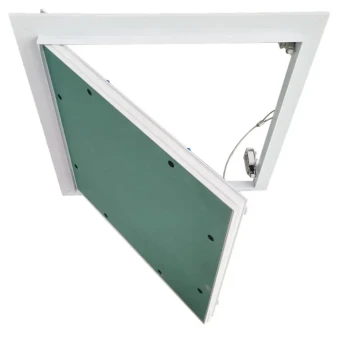Dec . 13, 2024 20:09 Back to list
Fire-Resistant Access Panels for Drywall Ceilings Installation and Benefits
Fire Rated Access Panels for Drywall Ceilings Ensuring Safety and Compliance
Fire safety is a critical concern for buildings across all sectors, and in this respect, fire-rated access panels play an essential role, particularly in drywall ceilings. These panels not only facilitate easy access to vital mechanical systems and utilities but also help maintain the integrity of fire-resistive barriers. In this article, we will explore the importance of fire-rated access panels, their construction, and the standards governing their use.
Understanding Fire-Rated Access Panels
Fire-rated access panels are specifically designed openings in drywall ceilings that provide access to concealed areas, such as electrical conduits, plumbing, and HVAC systems. The key feature of these panels is their ability to resist fire for a specified duration, typically ranging from 30 to 90 minutes, depending on the requirements of the building and applicable fire codes. This resistance can significantly mitigate the spread of fire and smoke, providing crucial minutes for occupants to escape and for firefighters to respond.
Construction and Materials
The construction of fire-rated access panels involves using materials that can withstand high temperatures. Typically, these panels are made with a core of mineral board or steel, surrounded by a durable frame. The frame is often treated with fire-resistant coatings to enhance its protective qualities. High-quality sealing mechanisms are also an integral part of their design, ensuring the panel fits tightly into the opening and preventing flames and smoke from penetrating through gaps.
Installation must be performed according to the manufacturer’s guidelines and local building codes to maintain the fire-resistant rating
. This means ensuring that the access panel is properly marked and that any adjacent drywall is installed correctly to avoid violating the fire rating.Compliance with Building Codes
fire rated access panels for drywall ceilings

In many regions, building codes require the use of fire-rated access panels in specific areas, particularly in commercial and industrial facilities. These codes are designed to ensure that buildings can withstand fire events for a prescribed period, allowing for effective evacuation and rescue operations.
It is essential for architects, builders, and property managers to understand the requirements laid out in local and national building codes. It often involves referencing standards set by organizations such as the National Fire Protection Association (NFPA) and Underwriters Laboratories (UL). Compliance with these regulations not only enhances life safety but also protects property and reduces liability.
Advantages of Fire-Rated Access Panels
In addition to enhancing fire safety, fire-rated access panels offer several advantages. They enable easy access to essential systems without compromising the building’s overall fire safety integrity. This ease of access allows for more efficient maintenance and repairs, which can save time and costs in the long run.
Furthermore, these panels are designed to blend seamlessly with drywall finishes, ensuring that aesthetics are not compromised while still providing safety. They come in various sizes and finishes, allowing for customization based on the specific requirements of the space where they are installed.
Conclusion
Fire-rated access panels for drywall ceilings are a vital component of modern building design, ensuring compliance with safety standards while facilitating maintenance access. As fire safety regulations continue to evolve, it is crucial for those involved in building design and management to stay informed about the latest developments in fire-rated products. Investing in high-quality fire-rated access panels not only safeguards human life but also enhances the resilience of a building against fire hazards. By prioritizing fire safety, we contribute to creating safer environments for all occupants.
-
Durable Ceiling T Grid Systems | Easy InstallationNewsAug.29,2025
-
PVC Gypsum Ceiling: Durable, Laminated Tiles for Modern SpacesNewsAug.28,2025
-
Pvc Gypsum Ceiling Is DurableNewsAug.21,2025
-
Mineral Fiber Board Is DurableNewsAug.21,2025
-
Ceiling Tile Clip Reusable DesignNewsAug.21,2025
-
Ceiling T Grid Modular DesignNewsAug.21,2025







